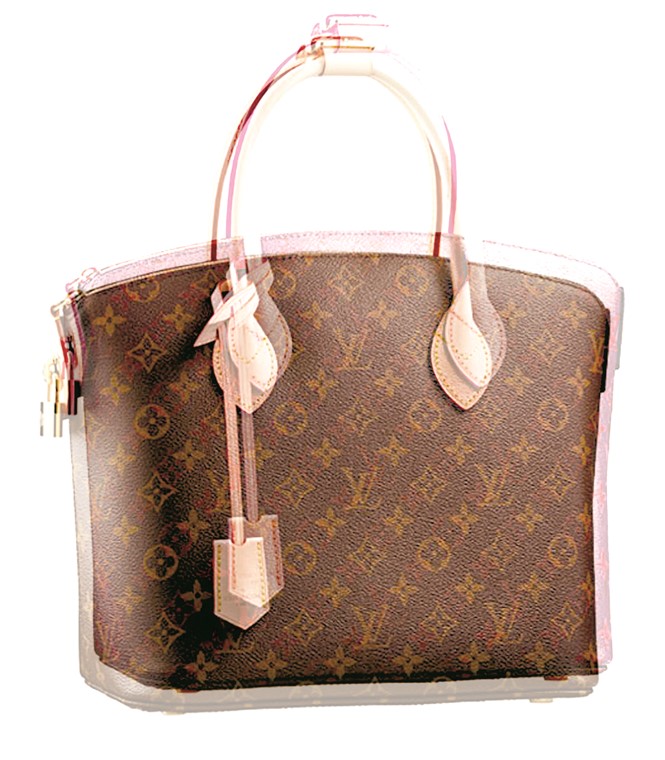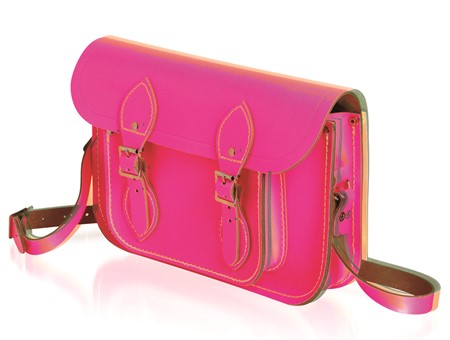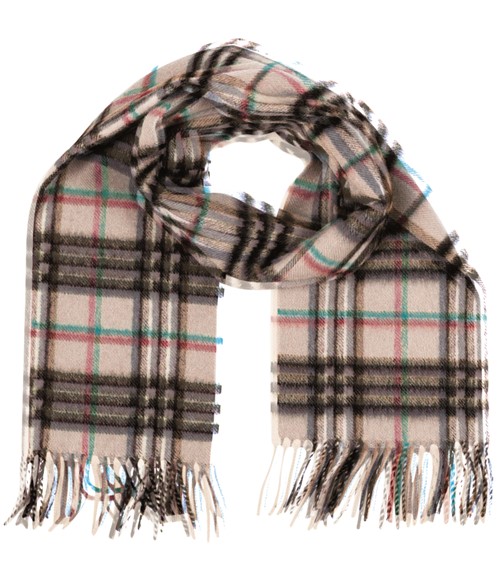Black market: Online brand protection

Counterfeit sites and goods are proliferating across several sectors. How can brands protect themselves online from fraudsters, cheats and copycats? Brittany Golob investigates
Perhaps a woman buys a new Louis Vuitton handbag, at a bit of a discount, through a third party website. It arrives and soon after, the handle breaks. She takes it to an LV retailer only to discover that her bag is not the genuine article. She, like 24% of global shoppers, has unknowingly purchased a counterfeit item online, according to the 'Global consumer shopping habits survey' carried out by online brand protection company MarkMonitor.
This scenario is not unusual and has potentially brand- damaging implications. Not only does the purchasing of counterfeit goods online present a customer service challenge, but the credibility of the brand’s online presence is questioned and the potential for a poor reputation may result. Online counterfeiters have proved to be strategic and malicious and present an ongoing risk to brand reputation, loyalty and trust.
The most infamous case study regarding counterfeit goods belongs to Burberry. British luxury jewel, Burberry found that its brand was being diluted during the early 2000s as fake goods disseminated across street culture. The BBC asked in 2005, “With UK sales falling, Burberry cannot afford to become a laughing stock in their own backyard. But just how does a top designer label shrug off a damaged image?”
Burberry, with a lot of marketing work and a repositioning of the brand, did shrug off that reputation. The problem in 2016 is, however, that online sales make brands even more vulnerable to this kind of reputational damage. Brand owners say cracking down on counterfeit websites and goods sales is a way to protect the quality of and reputation of the brand. But, according to the U.S. Trade Representative’s (USTR) December 2015 ‘Review of Notorious Markets’ report, counterfeiting has grown by 15% year-on-year.
The Cambridge Satchel Company, a newcomer to the premium fashion sector was founded by Julie Deane in 2008. Since then, it has inspired countless copycats and similar products to flood the marketplace. In 2012, Deane took action to protect the brand online. She said, "I founded the Cambridge Satchel Company five years ago, and since then the business has grown exponentially in a very short period of time. With great success came major challenges, with a multitude of unwanted copycats claiming to sell our satchels online. I was shocked and astonished by the sophistication and design of the websites selling fakes and the impact it was having on my customers and my brand."
Working with MarkMonitor – part of ThomsonReuters – to shut down counterfeit sites, the Cambridge Satchel Company was able to remove about £1.2m worth of counterfeit products. This indicates another damaging fact governing online brand protection. Counterfeit websites leech revenue that would have otherwise gone to the legitimate brand owner.
“Retail, luxury brands, electronics, and pharmaceuticals are among the worst-affected sectors. For example, an investment in the trafficking of counterfeit pharmaceuticals can generate a return 10 to 25 times higher than the same investment in drug trafficking”

One of the first to take legal action against counterfeiters was outdoor brand North Face, which said at least $780,000 in sales was lost each month to counterfeiters. For Belstaff, an Italian-owned British luxury retailer, a major claim in U.S. courts against counterfeiters resulted in a $42m award. Belstaff worked alongside MarkMonitor to uncover the pirating websites and then bring the claim to trial on trademark grounds.
“You can look at counterfeit in some ways as a good thing,” Alison Conway, Belstaff’s vice-president of client and omnichannel, says. “If your brand is in demand, you’re going to have a lot of counterfeit.” But, ultimately, counterfeiting is damaging. Conway says poorly-made fake products can give consumers a negative perception of the brand. The luxury market is particularly hurt by this. “Customers typically buy a Belstaff jacket and wear it for years,” Conway says. If a consumer believes he or she is purchasing the real deal and then the product doesn’t have the expected life span, that amounts to damaged trust and potentially damaged brand loyalty.
In pharmaceuticals, counterfeit goods can be more than just damaging to the brand, but to a consumer’s health. Additionally, faulty electronics masquerading as branded goods may break, cause fires or electrocution. The USTR report says, “Retail, luxury brands, electronics, and pharmaceuticals are among the worst-affected sectors. For example, an investment in the trafficking of counterfeit pharmaceuticals can generate a return 10 to 25 times higher than the same investment in drug trafficking.”
The internet has caused the problem to be compounded not only in terms of counterfeiters abilities to reach consumers, but it has eased the actual transmission of goods. Previously, large shipments of counterfeit goods would arrive through ports and customs guards would be trained to identify them. Now, each product ordered online is shipped individually, effectively removing the safeguard provided by customs officers. “The challenge the internet presents,” Charlie Abrahams, senior VP of global sales at MarkMonitor, says, “is instead of the consumer walking to a market and buying [a counterfeit product] there, people go to the internet. They order it off a website and get it mailed to them from the point of origin. That makes it much more difficult for physical countermeasures to be effective.”
Brands trying to counteract this must then turn to the internet for protection. A number of tools and strategies help companies track counterfeit websites, monitor goods on legitimate websites, like Amazon, eBay and Alibaba, and challenge the authenticity of counterfeit sites.
Amazon’s counterfeit warning states, “We take product authenticity very seriously. It is each seller’s responsibility to source and sell only authentic products. If you sell counterfeit goods, we may immediately suspend or terminate your selling privileges and destroy inventory in our fulfilment centres without reimbursement. In addition, if we determine that a seller account has been used to engage in fraud or other illegal activity, remittances and payments may be withheld or forfeited. The sale of counterfeit goods can also lead to legal action by rights holders and civil and criminal penalties.” But it is still up to brand owners to alert Amazon of potential counterfeiters.
Alibaba, China’s largest online marketplace, has been criticised for hosting counterfeit goods in the past and progress may be in name only. Forbes reported in November 2015 that NetNames, an online brand protection company, says up to 80% of its clients’ goods on Taobao – one of Alibaba’s platforms – are fake. The USTR warned Alibaba last December to take a stronger stance against counterfeiting. Yet, in some countries, counterfeiting is not illegal. China particularly had been lax on trademark law until a 2014 law allowed companies more ability to claim infringement. Montcler, a European luxury company won a precedent-setting $480,000 in December 2015 under the new law. Challenges remain though for brands dealing with online marketplaces as each has its own processes for contesting goods on its platform. Finding those goods and understanding the regulations can be difficult.
One of the main responses to counterfeit websites remains legal action. The USTR posts popular online retail sites known for selling fake goods at stopfakes.com. Companies like MarkMonitor and NetNames help brands track down and, in some cases, bring to court, fraudulent websites.

“You’d be surprised how many companies down’t have a brand protection strategy,” Abrahams says. The first steps should be to focus on taking down websites, thereby limiting risk and damage to the brand. In certain sectors, like pharmaceuticals, companies can investigate physical manufacturing premises to seize the equipment producing fraudulent goods. Taking cases to court is another option. Though more often than not, the counterfeit webmaster will not appear in court and thus the award given – like Belstaff’s $42m, is symbolic, not actual.
Getting counterfeit sites taken down is also a benefit in terms of SEO. Abrahams says brands are most vulnerable to fake sites when they undergo an online rebrand. Tom Dougherty, partner and UX director at London-based digital agency Delete, says a strong, innovative website should be the first point of brand protection. “A business that’s prepared to innovate will set you apart from the competition in a way that means you shouldn’t be concerned with counterfeit or copycat sites. If anything, your ideas being copied further down the line acts as an endorsement for your approach,” Dougherty says. “If your solution is designed and built correctly, any counterfeit sites shouldn’t be a problem, because the functionality and performance of the website will be intrinsically interlinked, making your site distinguishable in the market and further reinforcing the strength of your brand.”
Raytchle Reiss, SEO strategy at British web design and digital agency Rawnet, says counterfeiters can affect rankings in Google search. “In its guidelines, Google says that you shouldn’t duplicate content from someone else,” Reiss says. If that is the case, the legitimate brand site could drop in Google’s search rankings, resulting in poor click-through and SEO performance. By duplicating a site’s content, in part or in whole, the brand owner can be a victim of this. The 1998 U.S. Digital Millennium Copyright Act was enacted to protect copyright and intellectual property online, though. Reiss says the act allows brands to request Google to take the site out of its search rankings. The site will continue to exist, but it won’t be accessible through the search engine. “The frustrating thing,” she adds, “is sometimes the duplicated content can outrank your own content.” Reiss says monitoring and proactive action against copyright-infringing sites are essential for brand protection.












